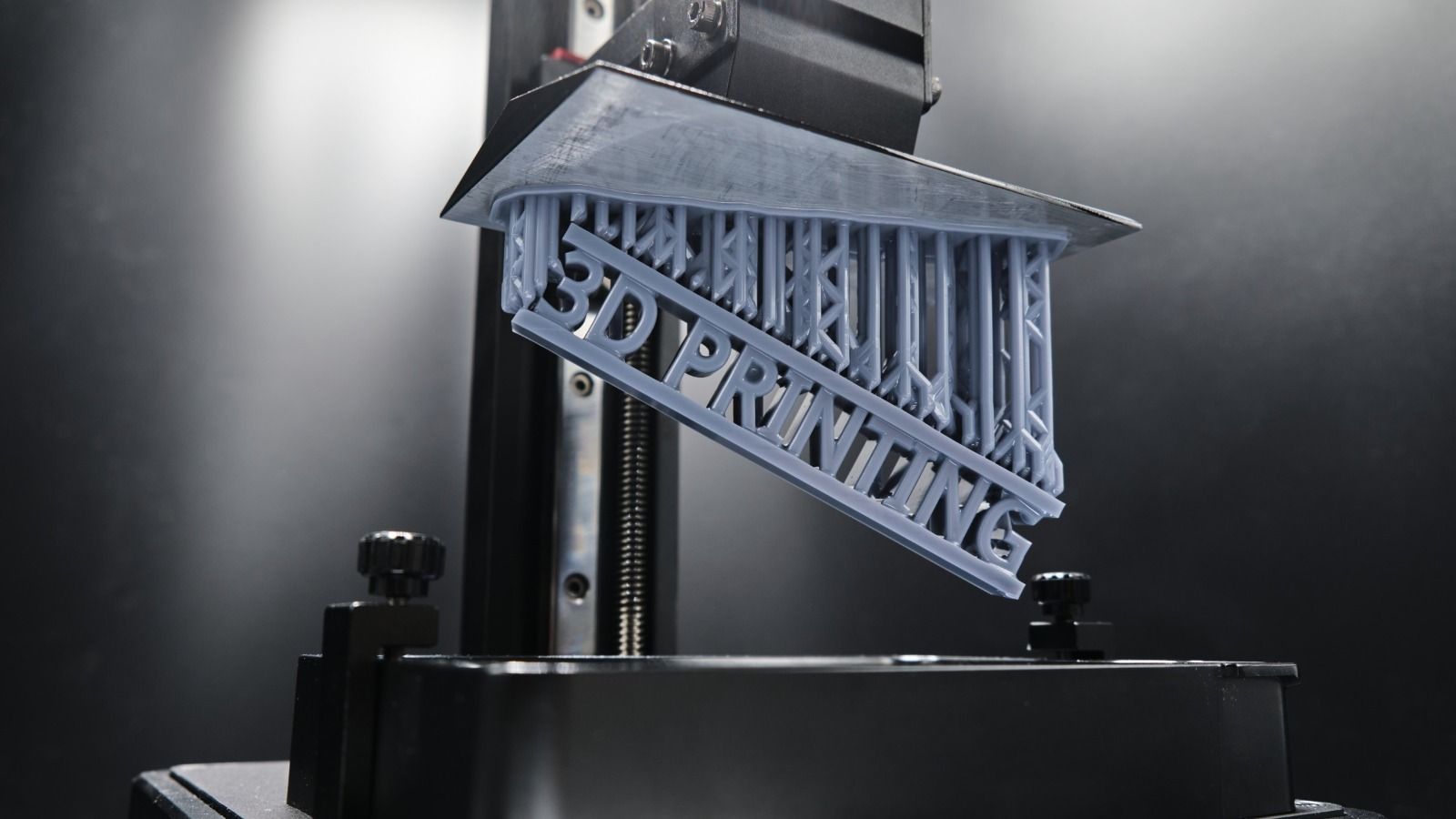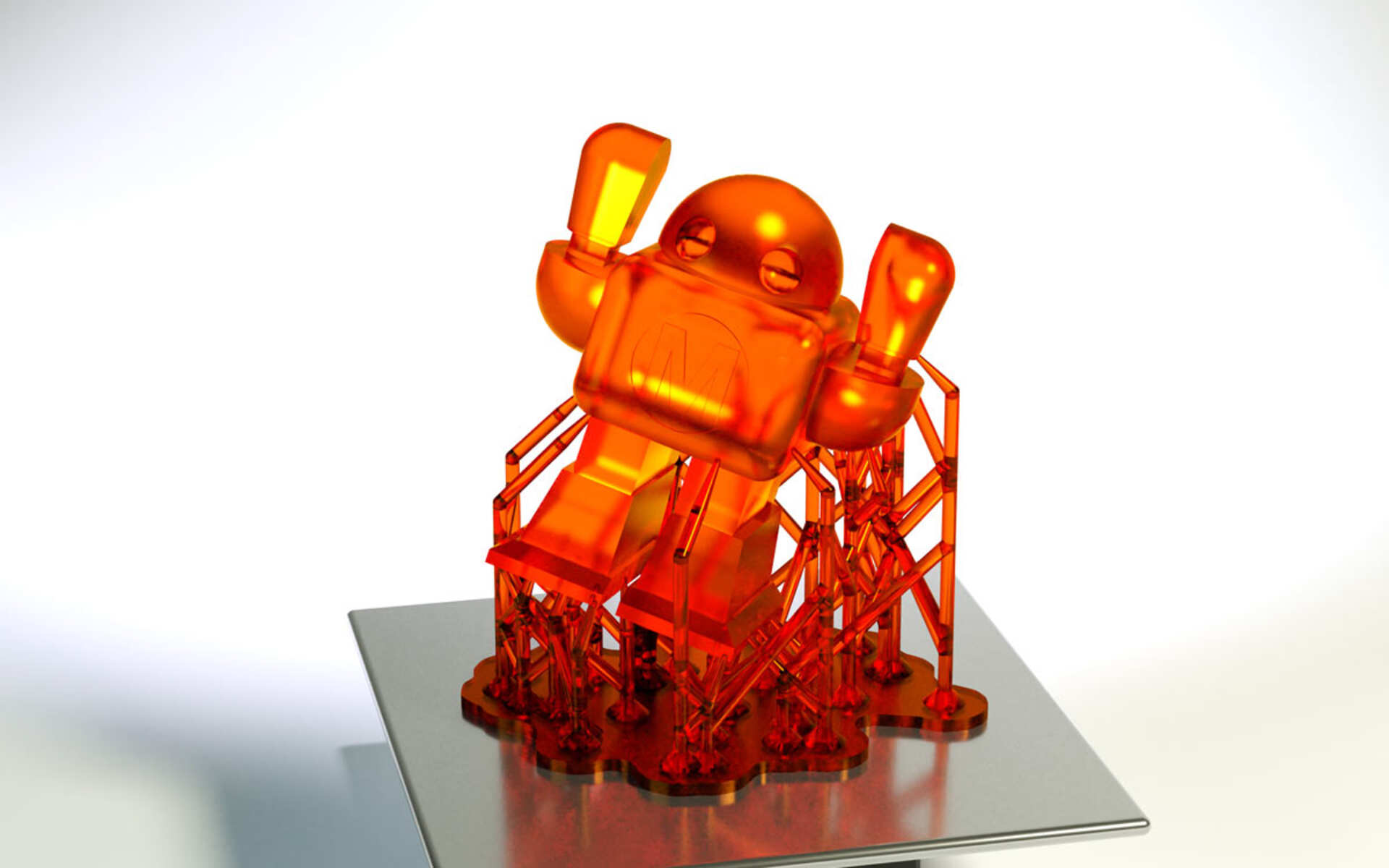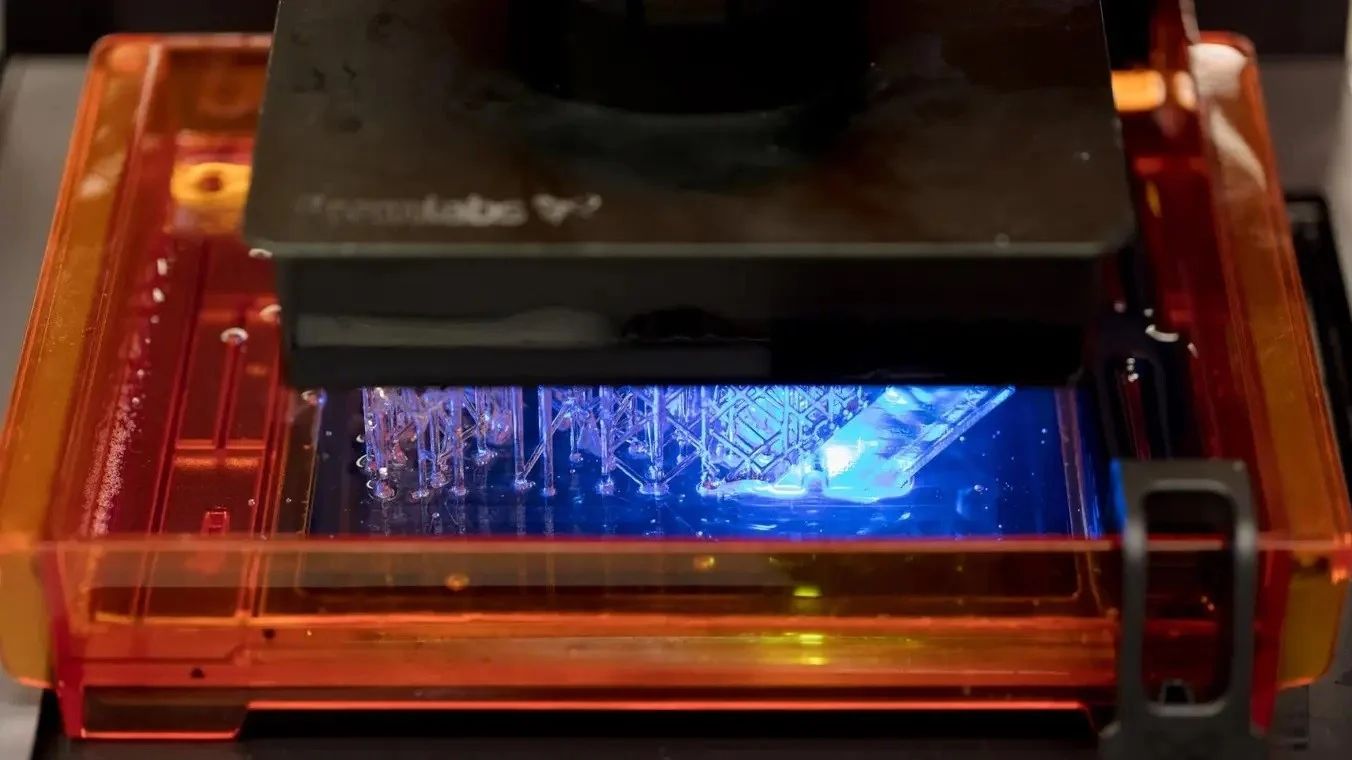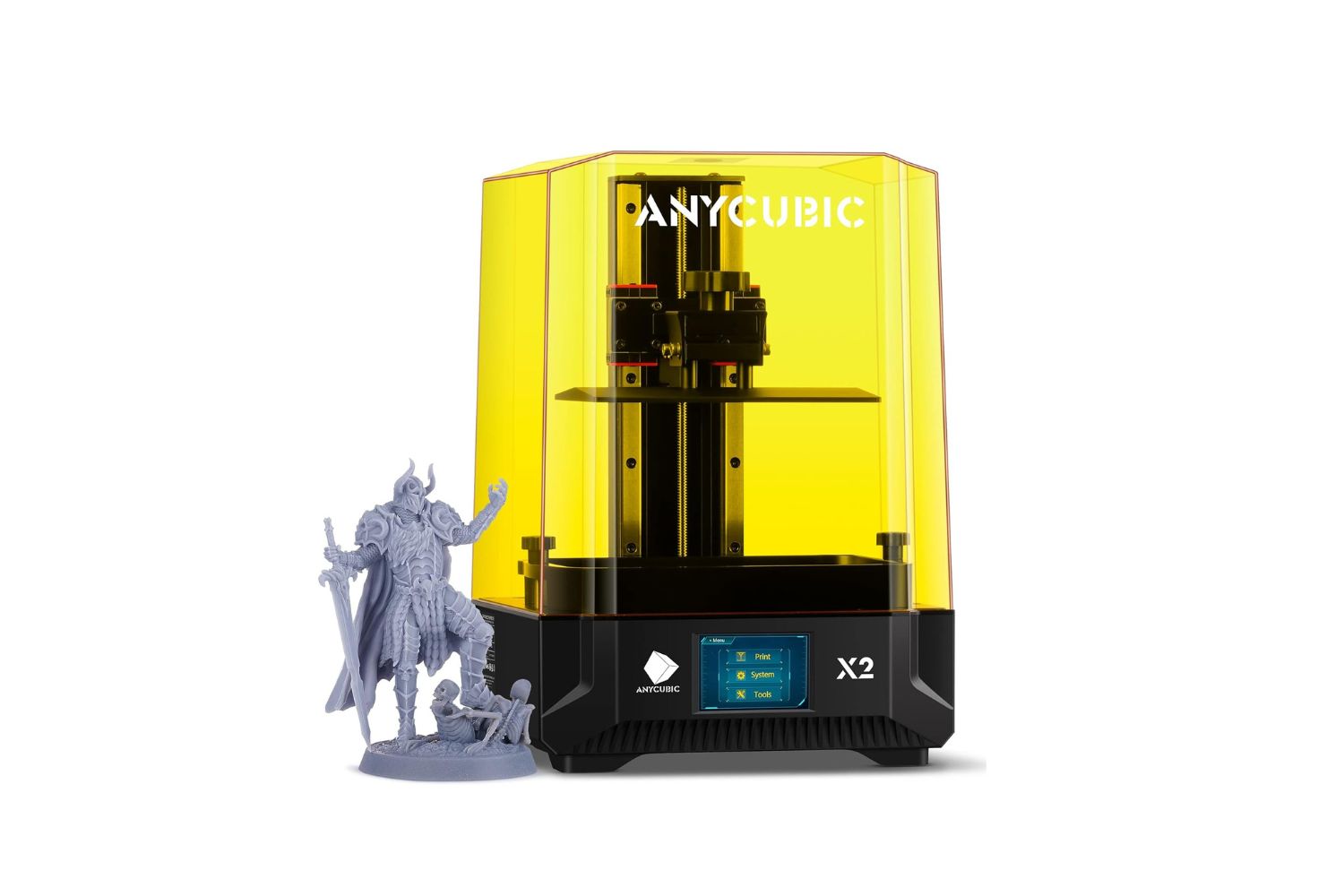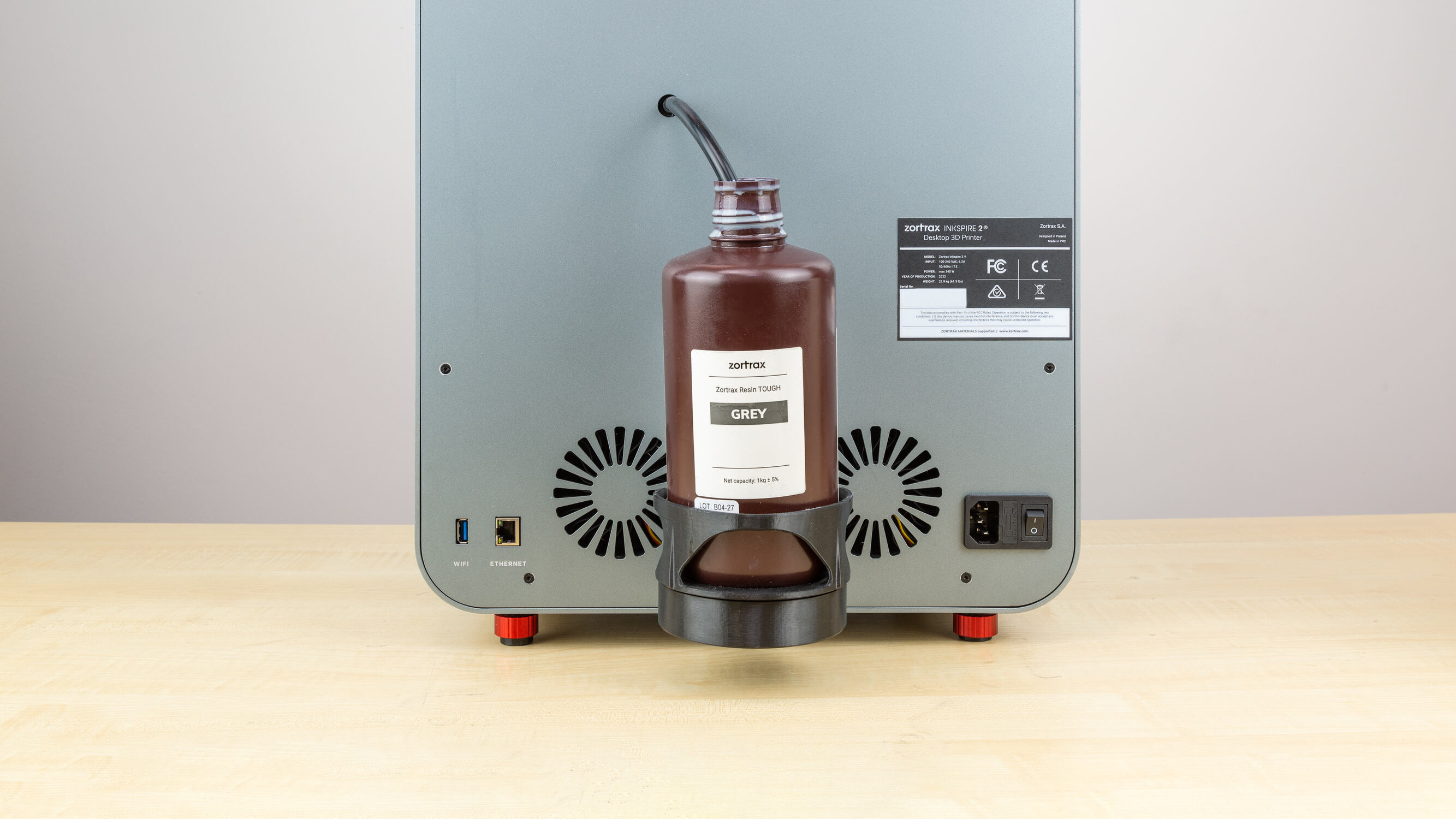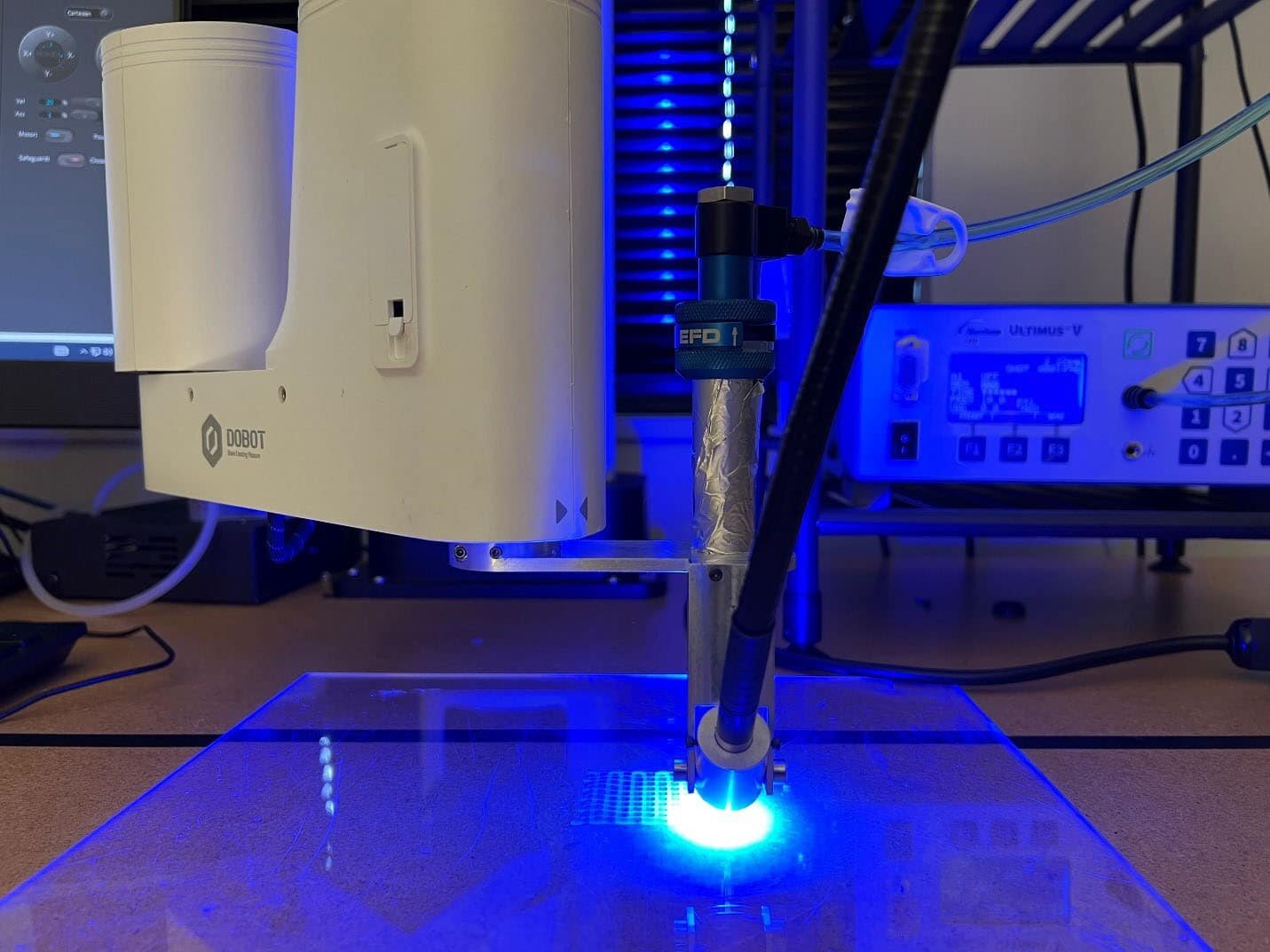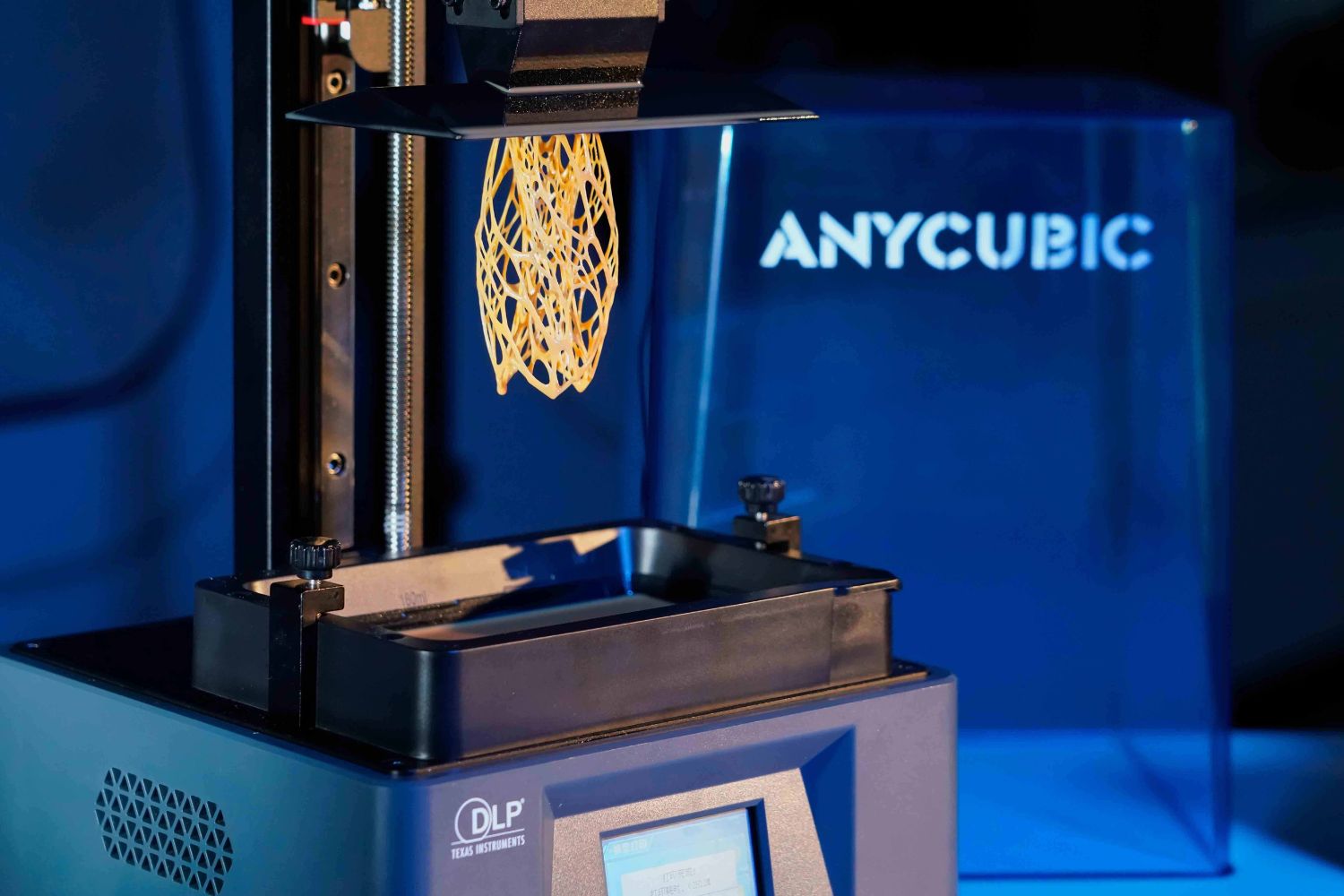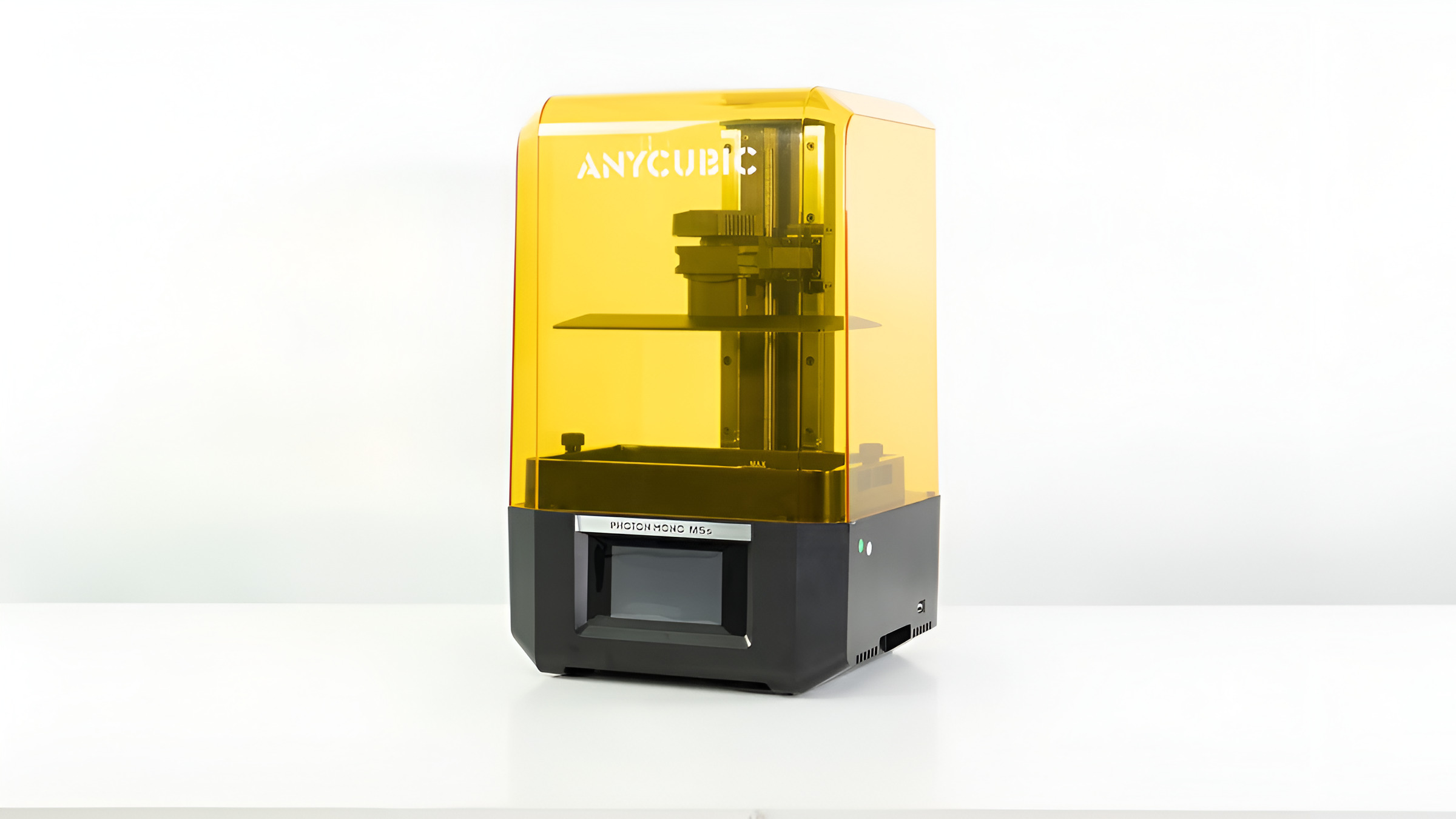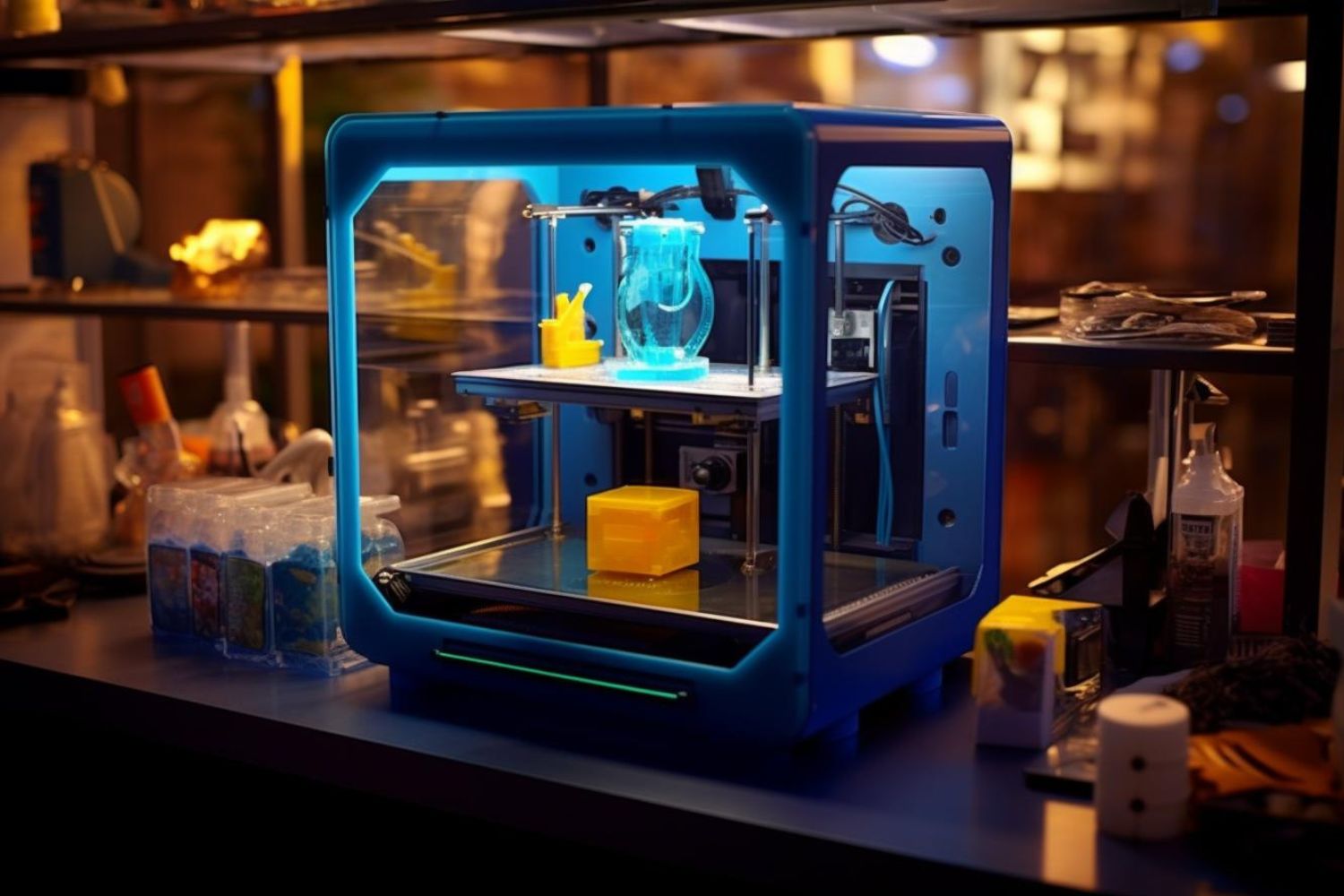Introduction
Welcome to the world of 3D printing, where innovation knows no bounds. One of the most fascinating advancements in this field is the resin 3D printer. With its ability to create intricate and detailed models, it has revolutionized the way we manufacture and prototype products.
If you’re new to the world of 3D printing, you might be wondering, what exactly is a resin 3D printer? How does it work, and what are its benefits and applications? In this article, we will explore these questions and more, guiding you through the exciting world of resin 3D printing.
A resin 3D printer, also known as a stereolithography printer or SLA printer, is a type of additive manufacturing machine that uses liquid resin materials to build three-dimensional objects layer by layer. Unlike traditional 3D printers that use filament, resin printers utilize photosensitive resin that hardens when exposed to light.
The process of resin 3D printing involves curing the liquid resin using either a laser or a UV light source. This solidifies the resin layer by layer, forming the desired object. The result is a high level of detail and accuracy, making resin 3D printing ideal for producing intricate designs, architectural models, jewelry, and even body parts for medical purposes.
The popularity of resin 3D printing has grown significantly over the years due to its numerous benefits. Not only does it offer exceptional precision and surface finish, but it also allows for the creation of complex geometries that may be challenging with other 3D printing methods.
In terms of applications, resin 3D printing has found its place in various industries. Architects and designers utilize resin printers to create realistic models of their designs, allowing for better visualization and client presentations. Jewelry manufacturers can produce intricate pieces with stunning detail. Dentists and orthodontists use resin 3D printing to create customized dental models and aligners. The possibilities are endless.
However, it’s important to note that resin 3D printing also comes with some considerations and challenges. The choice of the right resin printer, the type of resin material, and proper post-processing techniques are crucial for achieving optimal results. We will delve into these topics further in this article.
So, if you’re ready to dive into the world of resin 3D printing and unlock its endless possibilities, let’s get started!
What is a Resin 3D Printer?
A resin 3D printer, also known as a stereolithography (SLA) printer, is a type of additive manufacturing machine that creates three-dimensional objects using liquid resin materials. Unlike traditional 3D printers that use filament, resin 3D printers use a photosensitive resin that hardens when exposed to light.
The process of resin 3D printing begins with a digital 3D model of the desired object. The printer slices the model into thin layers, and these layers are then printed one at a time. The liquid resin is contained in a vat, and a build platform is submerged into the resin.
Using either a laser or a UV light source, the resin is cured or solidified layer by layer. The light selectively exposes the resin to trigger the curing process, creating a solid layer. Once a layer is complete, the build platform moves up, and a fresh layer of resin is spread over the cured layer. This process is repeated until the entire object is printed.
The resulting printed object is typically enclosed in liquid resin, which needs to be removed after printing. This is done by rinsing the printed object in a cleaning solvent that dissolves the uncured resin. Once cleaned, the object is post-processed further, which may involve curing in UV light to improve its mechanical properties and surface finish.
Resin 3D printers offer several advantages over other 3D printing technologies. One of the biggest benefits is the ability to produce highly detailed and intricate designs. The curing process allows for a higher resolution and finer details, resulting in objects with smooth surfaces and complex geometries.
Another advantage of resin 3D printers is their ability to produce objects with varying levels of flexibility and hardness. Different types of resin materials are available, ranging from rigid and durable to flexible and rubber-like. This allows for a wide range of applications in industries such as automotive, healthcare, and consumer products.
It’s important to note that resin 3D printing does have some limitations. The build volume of resin printers is generally smaller compared to other types of 3D printers, which may restrict the size of objects that can be printed. Additionally, resin printing can be slower compared to filament-based printing methods due to the layer-by-layer curing process.
In the next sections, we will explore the benefits and applications of resin 3D printing, as well as tips for using a resin 3D printer and potential challenges that may arise. So, let’s continue our journey into the world of resin 3D printing and uncover its incredible capabilities!
How Does a Resin 3D Printer Work?
Resin 3D printers, also known as stereolithography (SLA) printers, operate on a unique process that allows for the creation of highly detailed and accurate three-dimensional objects. Understanding how these printers work can help you appreciate the intricate process behind resin 3D printing.
The first step in the resin 3D printing process is to create a digital 3D model of the desired object. This model is typically designed using computer-aided design (CAD) software or obtained from other sources, such as online repositories or 3D scanning technologies.
Once you have the digital model, the resin printer software slices the model into multiple thin layers, typically ranging from 25 to 100 micrometers in thickness. These layers represent the cross-sections of the object that will be printed.
The sliced model is then sent to the resin 3D printer, which consists of a vat or tank that contains liquid resin. The resin used in these printers is a photosensitive material that undergoes a chemical reaction when exposed to specific light wavelengths, typically in the ultraviolet (UV) spectrum.
To begin the printing process, a build platform is lowered into the resin until it just touches the surface. The build platform can be either solid or perforated, depending on the specific printer model. The choice of the build platform can affect factors such as print speed and support structures.
Once the build platform is in position, the actual printing begins. There are two main methods used by resin printers to solidify the resin and create the object. The first method involves the use of a laser beam that selectively scans the surface of the resin, solidifying it where the laser hits. The laser moves in a controlled manner, tracing the cross-section of each layer based on the sliced model.
The second method involves the use of a UV light source that emits UV rays onto the surface of the resin. The UV light triggers the polymerization process in the resin, causing it to solidify layer by layer. The light source can be a series of LEDs positioned around the vat or a UV lamp that covers the entire surface.
After each layer is solidified, the build platform moves up slightly, and a fresh layer of liquid resin is spread over the cured layer. This process is repeated until all the layers are printed, gradually transforming the liquid resin into a complete three-dimensional object.
Once the printing is complete, the object is typically removed from the vat and rinsed in a cleaning solvent to remove any excess resin. This is an essential step to ensure the final object has a smooth surface finish.
Post-processing is often required after resin 3D printing to further enhance the object’s properties. This may involve curing the object under UV light to improve its mechanical strength and stability. Additional post-processing techniques like sanding, polishing, or painting can also be employed to achieve the desired aesthetics.
With its ability to create highly detailed and intricate objects, resin 3D printing opens up a world of possibilities for various industries, including healthcare, automotive, jewelry, and design. In the next sections, we will explore the benefits, applications, and challenges associated with resin 3D printing.
Benefits of Resin 3D Printing
Resin 3D printing offers a plethora of benefits that make it a popular choice for various applications. From the ability to create highly detailed and intricate designs to the versatility of materials, resin 3D printing provides unique advantages over other additive manufacturing methods.
One of the major benefits of resin 3D printing is the exceptional level of detail and accuracy it offers. The curing process allows for high-resolution printing, resulting in objects with smooth surfaces, intricate features, and fine details. This makes resin printing ideal for applications that require precise and intricate geometries, such as jewelry, architectural models, and medical prototypes.
Another advantage of resin printing is the wide range of material options available. Resins come in different formulations, offering different properties such as rigidity, flexibility, opacity, and even transparency. This versatility allows for creating objects with varying mechanical properties, making resin 3D printing suitable for a wide range of industries, including automotive, aerospace, and consumer products.
Resin 3D printing also offers faster print speeds compared to other additive manufacturing technologies, especially when it comes to printing complex and detailed models. The layer-by-layer curing process enables the creation of intricate designs in less time, making it ideal for rapid prototyping and small-scale production.
Furthermore, resin 3D printing provides superior surface finish compared to other 3D printing methods. The cured resin produces objects with smooth and glossy surfaces, reducing the need for extensive post-processing. This saves time and effort in sanding, polishing, or applying additional coatings to achieve the desired surface aesthetics.
With resin 3D printing, it is also possible to create objects with complex internal structures or hollow parts. Support structures are used during printing to provide stability, and once the printing is complete, these supports can be removed, leaving intricate internal cavities or hollow structures intact. This opens up possibilities for creating lightweight and complex designs without compromising on strength or functionality.
Additionally, resin 3D printers are relatively compact in size compared to other types of 3D printers, making them suitable for small workspaces or personal use. Their ease of use and user-friendly interfaces also contribute to their accessibility, allowing beginners and professionals alike to explore the world of 3D printing without extensive technical knowledge.
In summary, the benefits of resin 3D printing include high levels of detail and accuracy, versatile material options, faster print speeds, superior surface finish, and the ability to create complex internal structures. These advantages make resin 3D printing a popular choice for various applications, including prototyping, manufacturing, jewelry making, and product design.
Applications of Resin 3D Printing
Resin 3D printing has a wide range of applications across various industries, thanks to its ability to produce highly detailed and intricate objects. From rapid prototyping to creating customized products, resin 3D printing offers unique advantages that make it a valuable technology in different fields.
One of the primary applications of resin 3D printing is in the field of product design and development. Designers and engineers can use resin printers to quickly create prototypes of their ideas, allowing for efficient iteration and refinement of designs. This enables faster product development cycles and reduces time to market.
The healthcare industry has also embraced resin 3D printing for various applications. Dentists and orthodontists can create accurate dental models and aligners for better treatment planning and to improve patient outcomes. Surgeons can use 3D printed models to better visualize complex procedures and practice patient-specific surgeries before operating.
Jewelry designers and manufacturers have benefited greatly from resin 3D printing technology. The ability to produce intricate and detailed jewelry pieces with precision and consistency has revolutionized the industry. Designers can bring their creative visions to life, and manufacturers can quickly produce high-quality jewelry with intricate patterns and delicate details.
The architectural and construction sectors have also found value in resin 3D printing. Architects and designers can create realistic models of their designs, giving clients a tangible and accurate representation of the final product. This helps in better visualization and decision-making throughout the construction process.
The entertainment industry is another area where resin 3D printers have made a significant impact. Movie studios and visual effects companies use resin 3D printing to create detailed and accurate models for props, character designs, and set decorations. This allows for greater realism and attention to detail in films and TV shows.
In the field of education, resin 3D printing presents a valuable tool for teaching and learning. Students can explore concepts in various subjects, such as biology, chemistry, and engineering, through the creation of 3D printed models. This hands-on approach enhances understanding and engagement in the classroom.
Resin 3D printing also has applications in the automotive and aerospace industries. Engineers can create prototypes of vehicle components or aircraft parts, allowing for testing and validation before mass production. This saves time and resources while ensuring the highest quality standards.
These are just a few examples of the many applications of resin 3D printing. The versatility and precision of this technology enable its use in numerous industries, from manufacturing to healthcare, jewelry to education. As the technology continues to advance, we can expect to see even more innovative applications emerging in the future.
Choosing the Right Resin 3D Printer
When it comes to choosing a resin 3D printer, there are several factors to consider to ensure you find the right one for your needs. From print quality and resolution to build volume and user experience, each aspect plays a crucial role in selecting the best printer for your specific requirements.
The first consideration is the print quality and resolution. Different printers offer varying levels of detail and accuracy, so it’s essential to determine the level of precision you require for your projects. Look for a printer with a high-resolution capability to achieve the desired level of intricacy and smooth surface finish.
Next, consider the build volume of the printer. The build volume determines the maximum size of objects you can print. If you plan to create larger or more substantial objects, you’ll need a printer with a larger build volume to accommodate your designs. Keep in mind that larger build volumes often come with a higher price tag.
The type of resin materials compatible with the printer is another crucial factor. Different resins offer varying properties such as rigidity, flexibility, heat resistance, and transparency. Ensure that the printer you choose supports the specific resin materials you intend to work with, as this will determine the suitability for your intended applications.
Consider the user experience and ease of use. Look for a printer that has a user-friendly interface, intuitive software, and good customer support. This will ensure a smoother workflow and reduce the learning curve, especially if you’re new to resin 3D printing.
Connectivity options are also important. Some printers offer wireless connectivity, allowing you to remotely monitor and control the printing process. Others may have USB or Ethernet ports for direct connectivity to your computer. Choose a printer with the connectivity option that best suits your workflow and convenience.
Reliability and durability are crucial factors to consider. Look for printers with a solid construction and good reviews in terms of longevity and performance. It’s wise to invest in a reputable brand with a proven track record in the 3D printing industry.
Price and overall value for your budget should also be taken into account. Resin 3D printers can range in price, so it’s important to determine your budget and find a printer that offers a good balance between features, quality, and affordability.
Lastly, consider additional features and accessories that may enhance your workflow and printing experience. This can include features like automatic bed leveling, touchscreen interfaces, or removable build platforms. These extra features can greatly simplify the printing process and improve overall productivity.
By carefully considering these factors, you can choose the right resin 3D printer that meets your specific needs and helps you achieve outstanding results in your projects.
Tips for Using a Resin 3D Printer
Using a resin 3D printer requires attention to detail and proper techniques to achieve the best print quality and optimize the printing process. Here are some helpful tips to ensure a successful resin 3D printing experience:
- Choose the right resin: Select the appropriate resin material for your specific project requirements. Consider factors such as mechanical properties, color, and transparency to ensure the desired end result.
- Calibrate the build plate: Proper build plate calibration is crucial for achieving accurate prints. Make sure the build plate is leveled correctly and at the right height to ensure proper adhesion of the printed layers.
- Use supports effectively: Supports are essential for printing objects with overhangs and complex geometries. Optimize the placement of supports to minimize their impact on the surface finish and remove them carefully after printing.
- Monitor resin levels: Regularly check the resin levels in the vat during printing to prevent running out of resin mid-print. Maintaining the appropriate resin level ensures consistent printing and prevents errors.
- Handle resin with care: Resin materials can be toxic, so always follow safety guidelines and precautions when handling them. Wear gloves and protective eyewear, and dispose of used resin and cleaning solvents properly.
- Clean and maintain the printer: Keep your resin printer clean and well-maintained to ensure optimal performance. Regularly clean the vat, build platform, and resin tank to remove any residue or cured resin that may affect print quality.
- Optimize exposure settings: Experiment with exposure times and light intensities to find the ideal settings for your specific resin material and object design. Adjusting these settings can help improve print quality and reduce printing times.
- Post-processing techniques: After printing, carefully remove the object from the build platform and remove any remaining support structures. Rinse the object in a suitable cleaning solvent and cure it under UV light if required for improved mechanical strength and stability.
- Keep the environment controlled: Resin printing is sensitive to temperature and humidity. Maintain a stable and controlled environment to prevent issues like warping or inconsistent prints.
- Stay informed and learn from others: Explore online communities, forums, and resources dedicated to resin 3D printing. Engage in discussions, seek advice, and learn from the experiences of other users to expand your knowledge and improve your skills.
Remember, practice and experimentation are keys to mastering resin 3D printing. With time and experience, you’ll develop a better understanding of your specific printer and resin materials, allowing you to achieve exceptional print results.
Potential Challenges of Resin 3D Printing
While resin 3D printing offers numerous benefits, there are also potential challenges that users may encounter during the printing process. Understanding these challenges can help you overcome them and achieve successful prints. Here are some common challenges associated with resin 3D printing:
- Printing Failure: Prints may fail due to various reasons, such as improper leveling, insufficient resin, or an incorrectly sliced model. It’s important to carefully follow the recommended procedures and settings to minimize the risk of failed prints.
- Resin Handling and Safety: Resin materials can be toxic and sensitive to ultraviolet (UV) light. It’s crucial to handle them with care, wear appropriate protective gear, and follow proper disposal procedures to ensure personal safety and environmental responsibility.
- Print Supports: Adding support structures is necessary for printing overhangs and complex geometries. However, removing the supports after printing can be challenging and may leave noticeable marks or require post-processing to achieve a smooth surface finish.
- Post-Processing: Resin prints require post-processing steps such as rinsing in a cleaning solvent and curing under UV light. Improper post-processing techniques can result in residue, warping, or insufficient curing, affecting the final print quality.
- Build Volume Limitations: Resin 3D printers typically have smaller build volumes compared to other printing technologies. This can limit the size of objects that can be printed. Ensure your designs fit within the build volume to avoid disappointment or the need to split larger models.
- Print Speed: Resin printing can be slower compared to other types of 3D printing due to the curing process. High-resolution prints and intricate designs may require longer curing times, resulting in extended printing durations.
- Optimizing Settings: Finding the optimal exposure times, light intensity, and layer thickness settings for your specific resin material can involve some trial and error. It’s important to understand the characteristics of your resin and adjust the settings accordingly for the best results.
- Environmental Factors: Resin printing can be affected by temperature and humidity. Fluctuations in these factors may lead to issues like warping, incomplete curing, or inconsistent print quality. Maintaining a controlled printing environment can help mitigate these challenges.
- Cost: Resin 3D printing can be more expensive compared to other types of 3D printing technologies. Resin materials and the maintenance of resin printers may involve higher costs. Consider the overall expenses and weigh them against the benefits and specific requirements of your projects.
Despite these challenges, they can be overcome with proper knowledge, techniques, and experience. As you become familiar with your resin 3D printer and the characteristics of your resin materials, you can develop strategies to optimize the printing process and achieve consistent, high-quality prints.
Conclusion
Resin 3D printing, with its ability to create intricate and detailed objects, has transformed the world of additive manufacturing. Throughout this article, we have explored the definition of a resin 3D printer, its working process, benefits, applications, and potential challenges.
Resin 3D printing offers unparalleled levels of detail and accuracy, making it ideal for creating highly intricate designs in industries such as jewelry, architecture, healthcare, and entertainment. The versatility of resin materials allows for the production of objects with diverse mechanical properties, meeting the specific needs of various applications.
Choosing the right resin 3D printer involves considering factors such as print quality, build volume, material compatibility, user-friendliness, and connectivity options. By selecting a printer that aligns with your requirements, you can maximize your printing capabilities and achieve outstanding results.
Optimizing the printing process requires adhering to best practices, such as proper calibration, effective support placement, careful resin handling, and appropriate post-processing techniques. Overcoming challenges, such as print failures, post-processing issues, and environmental factors, are key to achieving success in resin 3D printing.
In conclusion, resin 3D printing continues to push the boundaries of creativity and manufacturing capabilities. Its remarkable precision, versatility, and applications across multiple industries make it an invaluable tool for product designers, engineers, artists, and innovators. As the technology advances and more materials and printers become available, the possibilities for resin 3D printing are boundless.







